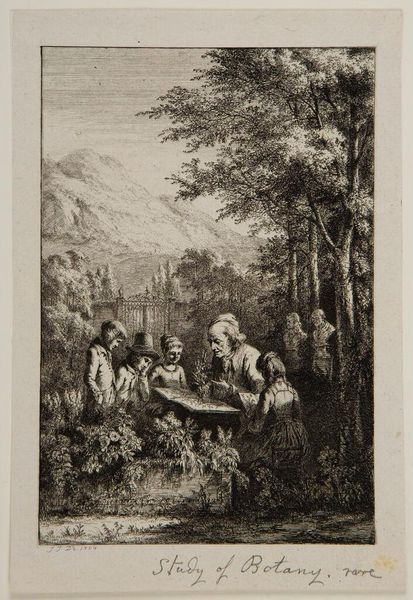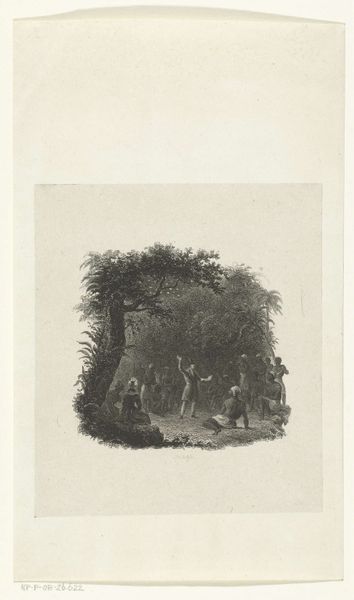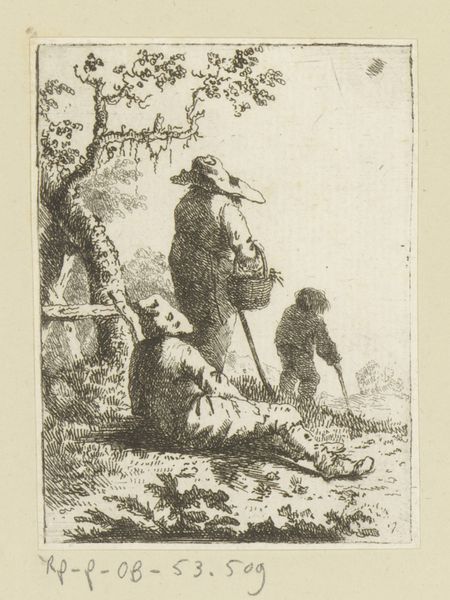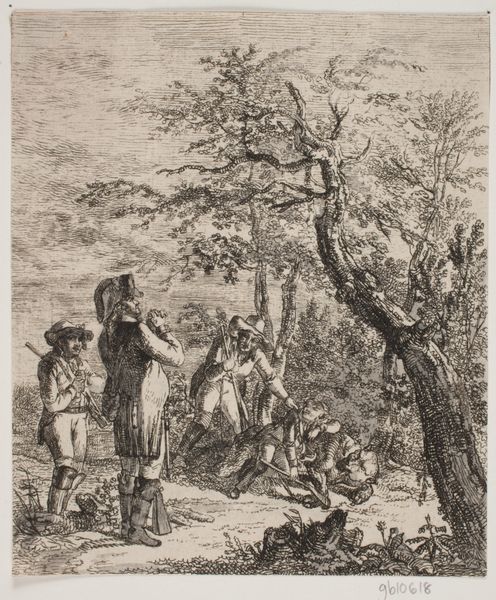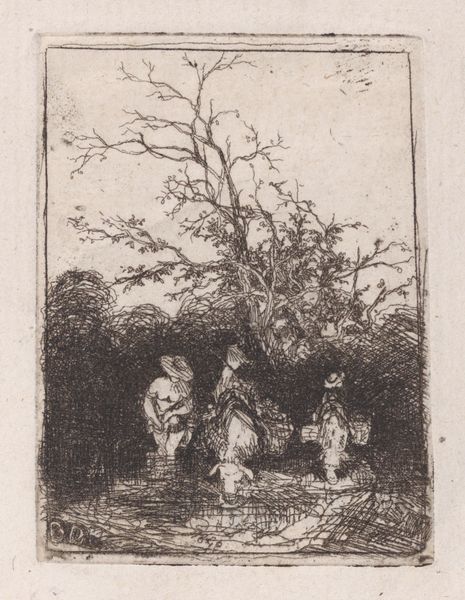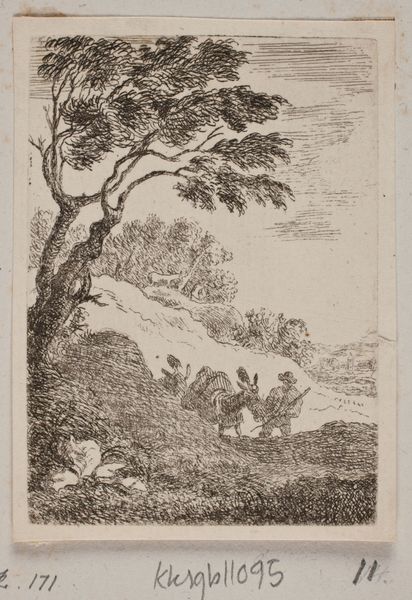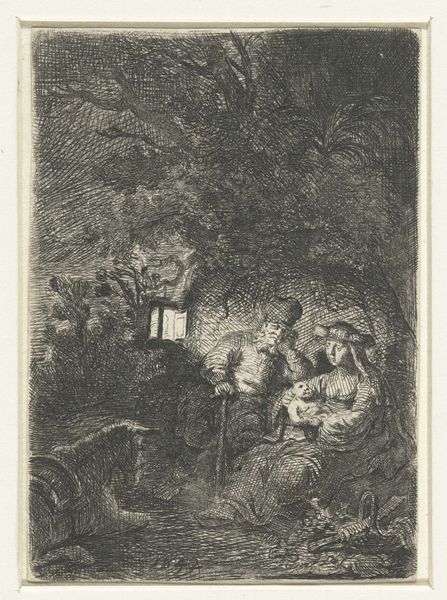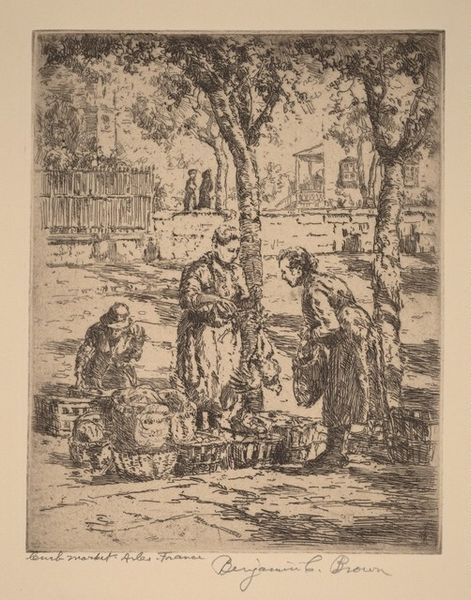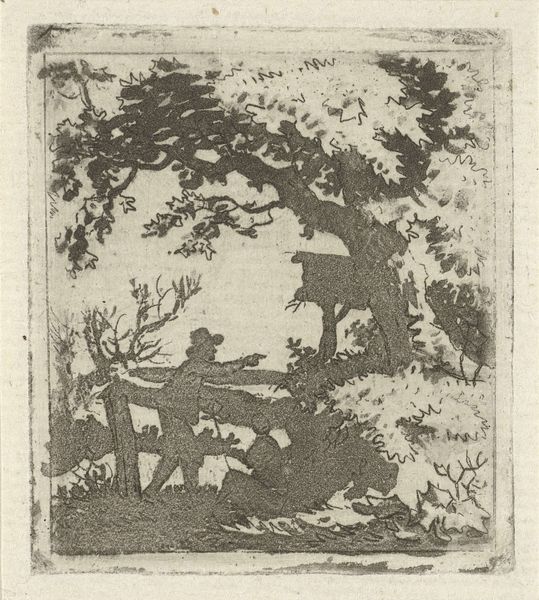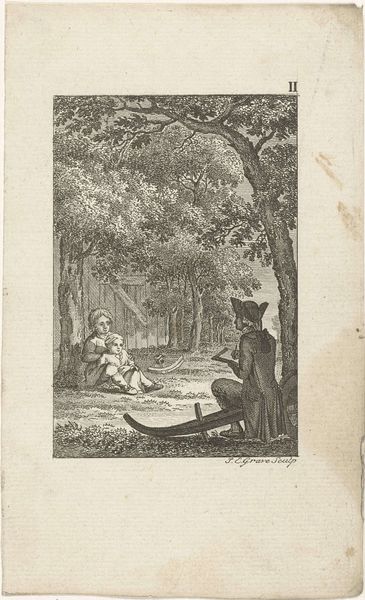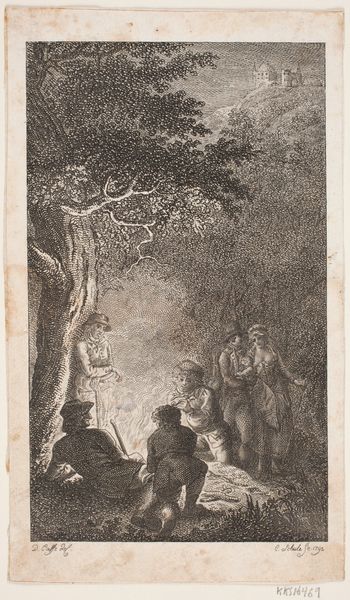
print, etching
#
narrative-art
#
ink painting
# print
#
etching
#
landscape
#
figuration
Copyright: Public domain
Curator: Before us is "Hans Christian Andersen Fairy Tales," an etching by Mykola Murashko, created in 1873. Editor: There's a wistful, hazy atmosphere to this scene, almost dreamlike. The colour palette feels limited yet effective in conveying this mood. The cluster of figures feels strategically placed; they add significant depth of composition. Curator: Indeed, note how Murashko employs etching to create distinct textures. See how the varying line weights differentiate between the foliage, clothing, and the flatness of the sky, despite the shared palette? There is a careful juxtaposition of forms here: rigid silhouettes of children playing by an embracing shade, symbolizing contrasting aspects of youth and shelter. Editor: Right. Children resting under an old, giant tree immediately conjures imagery related to life cycles and storytelling. Trees often represent wisdom, time, and ancestral connection. Their carefree activity under the tree seems imbued with protection and storytelling. Curator: Observe the light. Murashko meticulously uses contrasting areas of dark and light to produce a feeling of depth. This helps frame the figures beneath the tree, underscoring a spatial harmony and contributing to the aesthetic equilibrium of the scene. Editor: I'm also struck by the fact that it's connected to Hans Christian Andersen. That points us to tales often filled with complex moral questions. Do the children playing, their gestures, suggest particular characters or scenarios? There is perhaps an allegory for children finding solace and imaginative adventures amidst an enchanting old, and knowing tree. Curator: Your reading adds nuance to my observation of light and shade as simple structural devices! I might have dismissed your observation initially. It points me now toward a broader semiotic context in which dark and light become not just designators, but are laden with symbolism regarding tales themselves. Editor: Exactly! The composition, colouration, choice of character groupings - everything acts to support those ideas of respite, imagination, adventure. What did you ultimately make of the formal, and figurative space as a sum of its parts? Curator: Ultimately, this artwork succeeds on its inherent aesthetic. Through its carefully modulated form and symbolic charge, it manages to touch base upon themes universal to art itself.
Comments
No comments
Be the first to comment and join the conversation on the ultimate creative platform.

